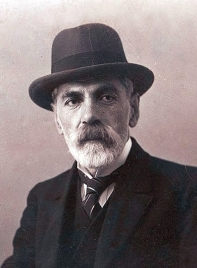Hovhannes Kajaznuni
Wednesday, March 8, 2023
Hovhannes Kajaznuni or Katchaznouni (14 February 1868 – 15 January 1938) was an Armenian architect and politician who served as the first Prime Minister of the First Republic of Armenia from 6 June 1918 to 7 August 1919.
Kajaznuni was born Hovhannes Ter-Hovhannisian in 1868 in the town of Akhaltsikh (present-day Akhaltsikhe), then part of the Akhaltsikhe uezd of the Tiflis Governorate of the Russian Empire, now part of Georgia. He attended secondary school in Tiflis from 1877 to 1886. In 1887, he moved to Saint Petersburg and entered the Citizens' Architectural Institute, graduating with honours in 1893. While in Saint Petersburg, Kajaznuni joined the Armenian Revolutionary Federation, eventually becoming one of its most important figures. After graduation, he worked at the construction department of the Baku provincial administration (1893–95), as an architect in Batum (1895–1897), and as regional architect at the Tiflis provincial administration (1897–99). Between 1899 and 1906, he worked as a senior architect in Baku, designing hospitals and apartment buildings, his most notable work being the Saint Thaddeus and Bartholomew Cathedral completed in 1911. After 1906 he devoted himself to political and social activities.
Kajaznuni was forced to leave the Caucasus in 1911 to avoid being called to testify at the trial of Armenian Revolutionary Federation members mounted by the Russian government in Saint Petersburg in January 1912. He lived in Constantinople and then in Van until 1914, when he returned to the Caucasus. He became a member of the Armenian National Council in 1917 and was an ARF representative in the Seym (the Transcaucasian Parliament) until 1918.





